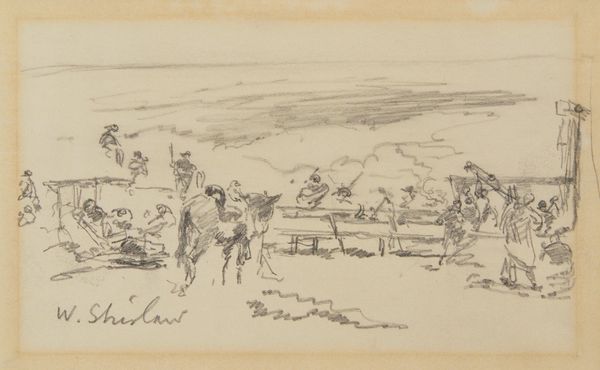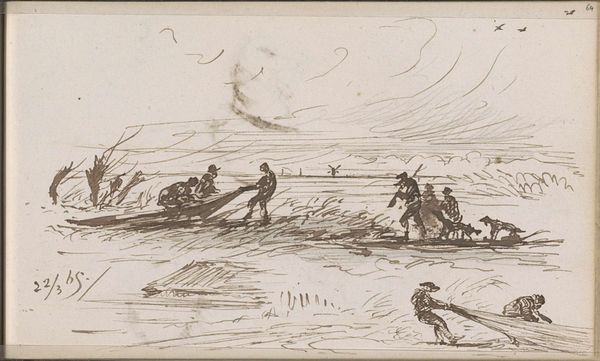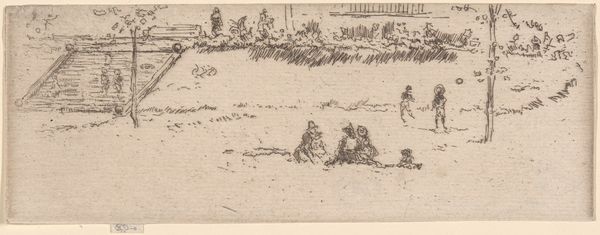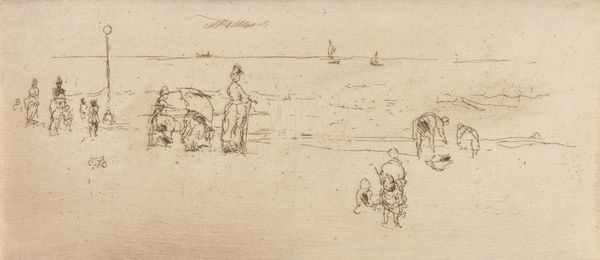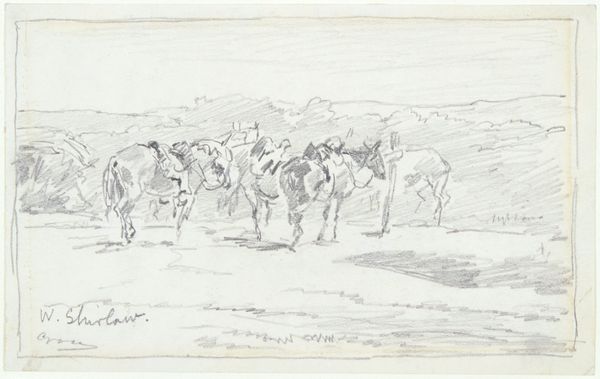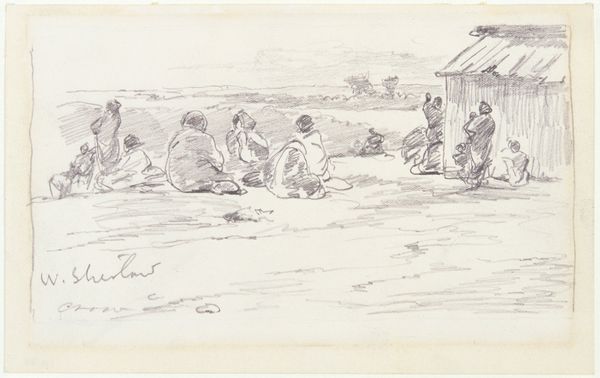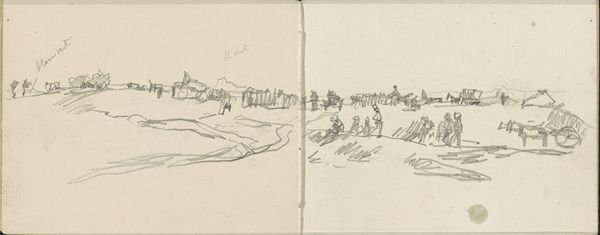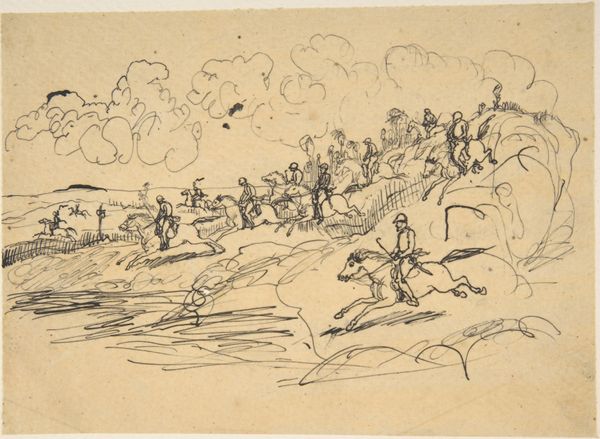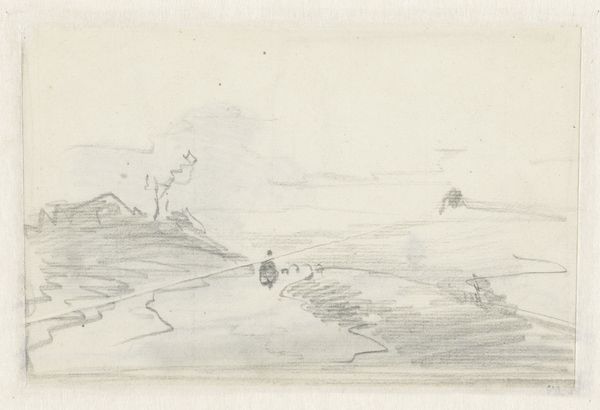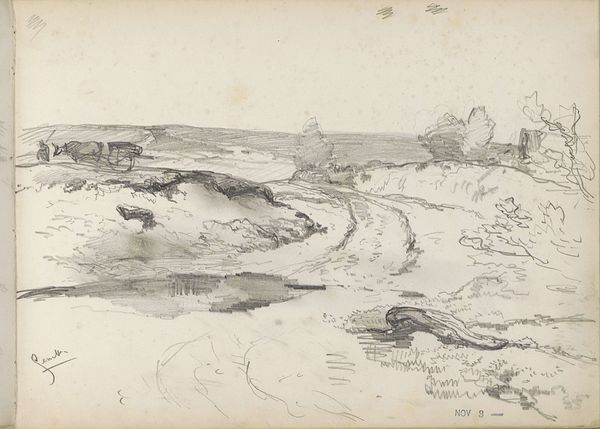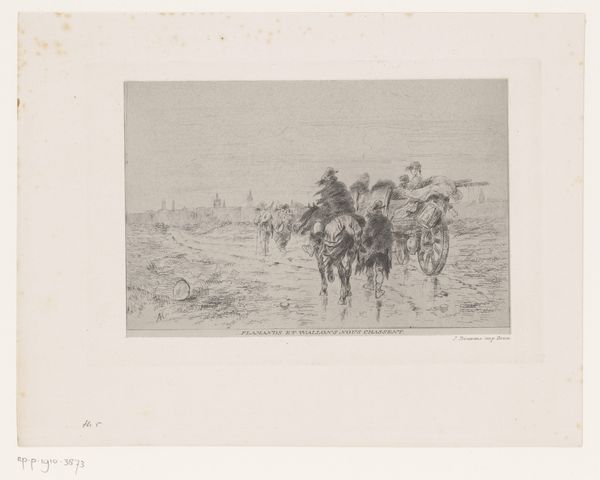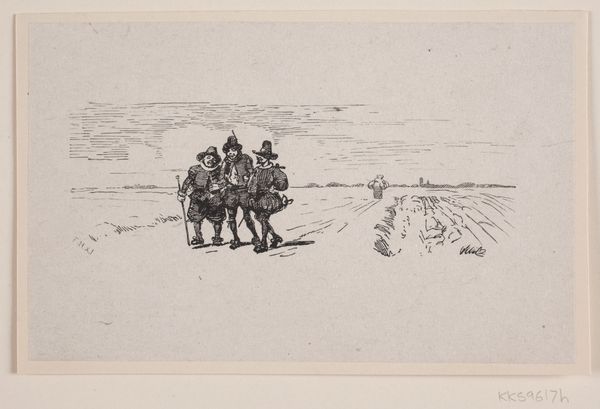
drawing, paper, dry-media, pencil, graphite
#
drawing
#
pencil sketch
#
landscape
#
paper
#
dry-media
#
sketchwork
#
pencil
#
graphite
Dimensions: 4 1/2 x 7 1/2 in. (11.43 x 19.05 cm)
Copyright: Public Domain
Editor: We’re looking at Walter Shirlaw’s "Sketch made on Indian Reservation," a graphite pencil drawing from around 1890. The first thing that strikes me is how sparse it is. There’s a real sense of openness in the composition, almost a barrenness. What do you see in this piece? Curator: The network of lines, particularly the hatched areas, creates a textural flatness that suppresses any real depth, wouldn’t you agree? See how the foreground figures are given nearly the same linear weight as the implied horizon? Editor: I see what you mean. It flattens everything out. Does that choice tell us something? Curator: Certainly. The artist emphasizes surface and the act of drawing itself. Note also the varied pressure of the pencil. In the lower portions, there's significant shading to delineate figures. But at the upper margin of the sheet, the isolated figure is given very little structural information. This use of "sprezzatura" makes us ask: What is Shirlaw's intention in balancing descriptive clarity and representational absence? Editor: So it's not just a quick sketch, but a deliberate balancing act. The sketchiness is actually a very conscious choice about form and…well, presence, or maybe absence. I hadn’t thought about it that way. Curator: Indeed. Consider how the structural tensions themselves activate the act of seeing and analyzing for the viewer. The interplay between form and content here is crucial. Editor: I now see that the real focus is on how we see the subject matter, not necessarily the subject itself. Thanks for opening my eyes! Curator: The pleasure was mine. By carefully attending to these formal elements, the work opens itself to new interpretations.
Comments
No comments
Be the first to comment and join the conversation on the ultimate creative platform.
